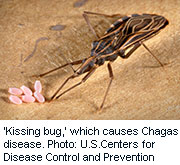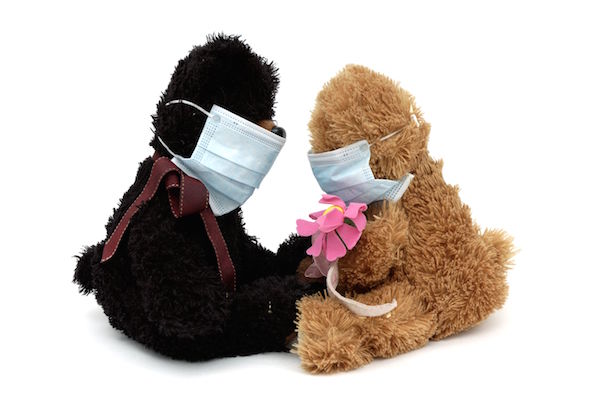
THURSDAY, May 8, 2014 (HealthDay News) — Five types of parasitic infections have just been labeled priorities for public health action by U.S. health officials.
“Parasitic infections affect millions around the world causing seizures, blindness, infertility, heart failure, and even death,” Dr. Tom Frieden, director of the U.S. Centers for Disease Control and Prevention, said in an agency news release Thursday.
“They’re more common in the U.S. than people realize and yet there is so much we don’t know about them. We need research to learn more about these infections and action to better prevent and treat them,” Frieden added.
The five neglected parasitic infections in the United States are: Chagas disease, cysticercosis, toxocariasis, toxoplasmosis, and trichomoniasis. All were targeted based on the number of people infected, the severity of the illnesses, and the ability to prevent and treat them, the CDC said.
While parasitic infections can sometimes affect millions of people, they often cause few symptoms and go unnoticed. In a special supplement to the American Journal of Tropical Medicine and Hygiene, CDC experts noted the large numbers of Americans who may be at risk:
- More than 300,000 people are infected with Trypanosoma cruzi, an insect-borne parasite that causes Chagas disease, and more than 300 infected babies are born every year.
- There are at least 1,000 hospitalizations for symptomatic cysticercosis, a tissue infection by the pork tapeworm.
- At least 14 percent of the U.S. population has been exposed to Toxocara, the parasite that causes toxocariasis, a parasitic infection from canine and feline roundworm, and each year at least 70 people — most of them children — are blinded by resulting eye disease.
- More than 60 million people are chronically infected with Toxoplasma gondii, the parasite that causes toxoplasmosis. New infections in pregnant women can cause birth defects, and infections in people with weakened immune systems can be deadly.
- Trichomoniasis, a sexually transmitted disease, can cause pregnancy problems and increase the risk of other sexually transmitted infections, including HIV. The Trichomonas parasite is extremely common, affecting 3.7 million people, but is easily treatable.
The CDC experts noted that most parasitic infections can be prevented and many are treatable. But they most often go undiagnosed and untreated because people don’t know they are at risk or infected, and many doctors, unfamiliar with these infections, fail to diagnose or treat them properly, they added.
“The [neglected parasitic infections] in the United States are part of the global burden of parasitic diseases, and strategies that reduce or eliminate them in the United States can someday be applied globally,” the authors noted in the news release.
The CDC actions to protect people from these parasitic infections include: increasing public and physician awareness; improving diagnosis methods; providing treatment advice, including distribution of otherwise unavailable drugs; and analyzing data to learn more about the infections.
More information
The U.S. National Library of Medicine has more about parasitic diseases.
Copyright © 2025 HealthDay. All rights reserved.

